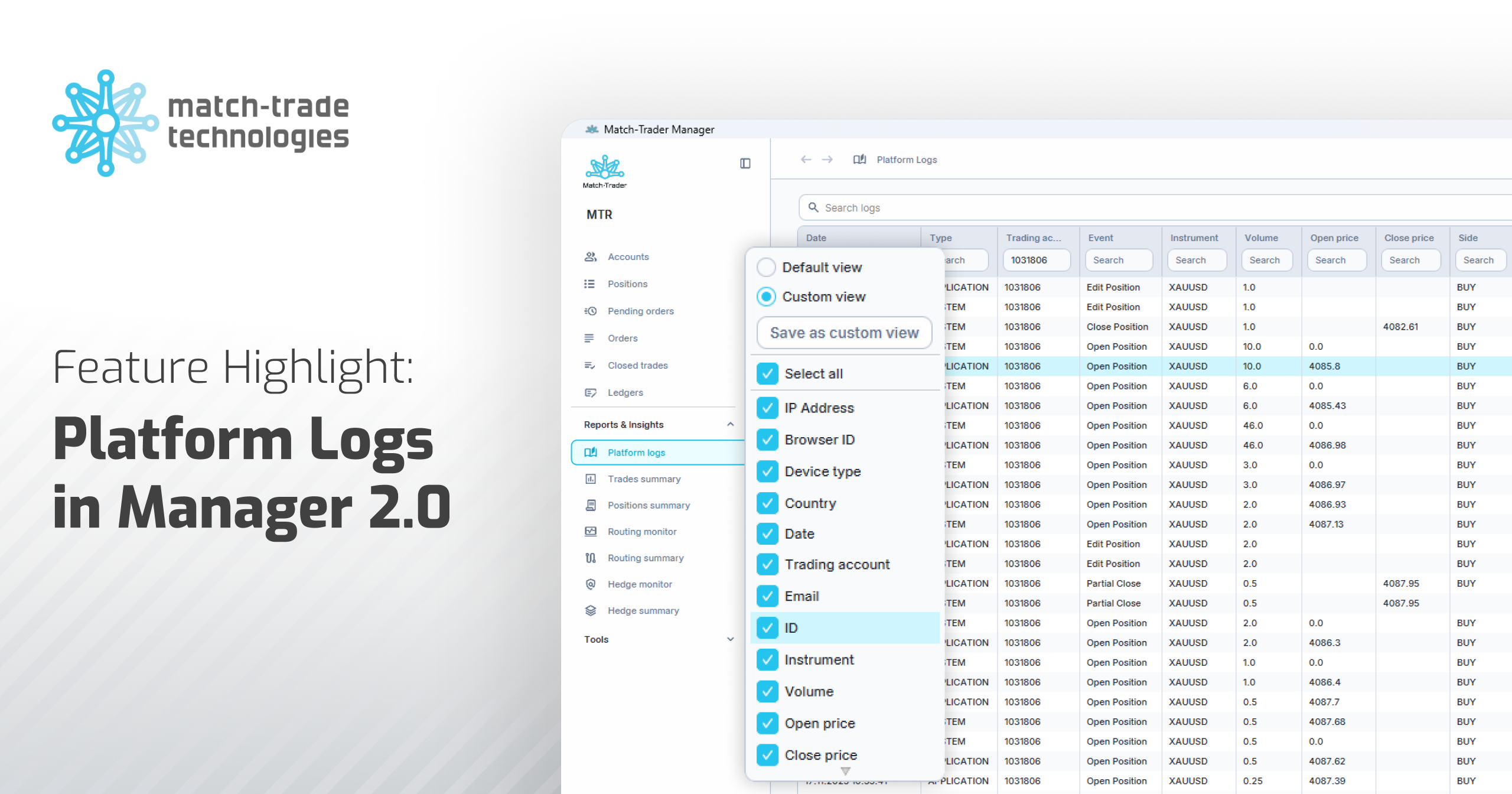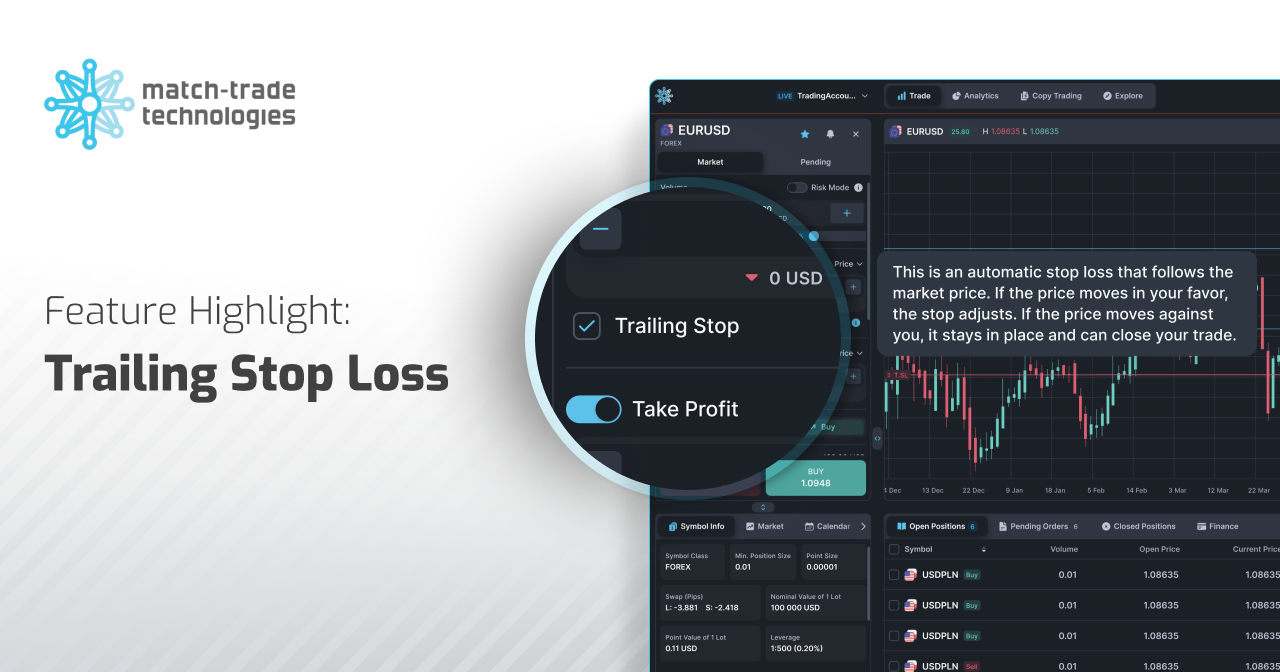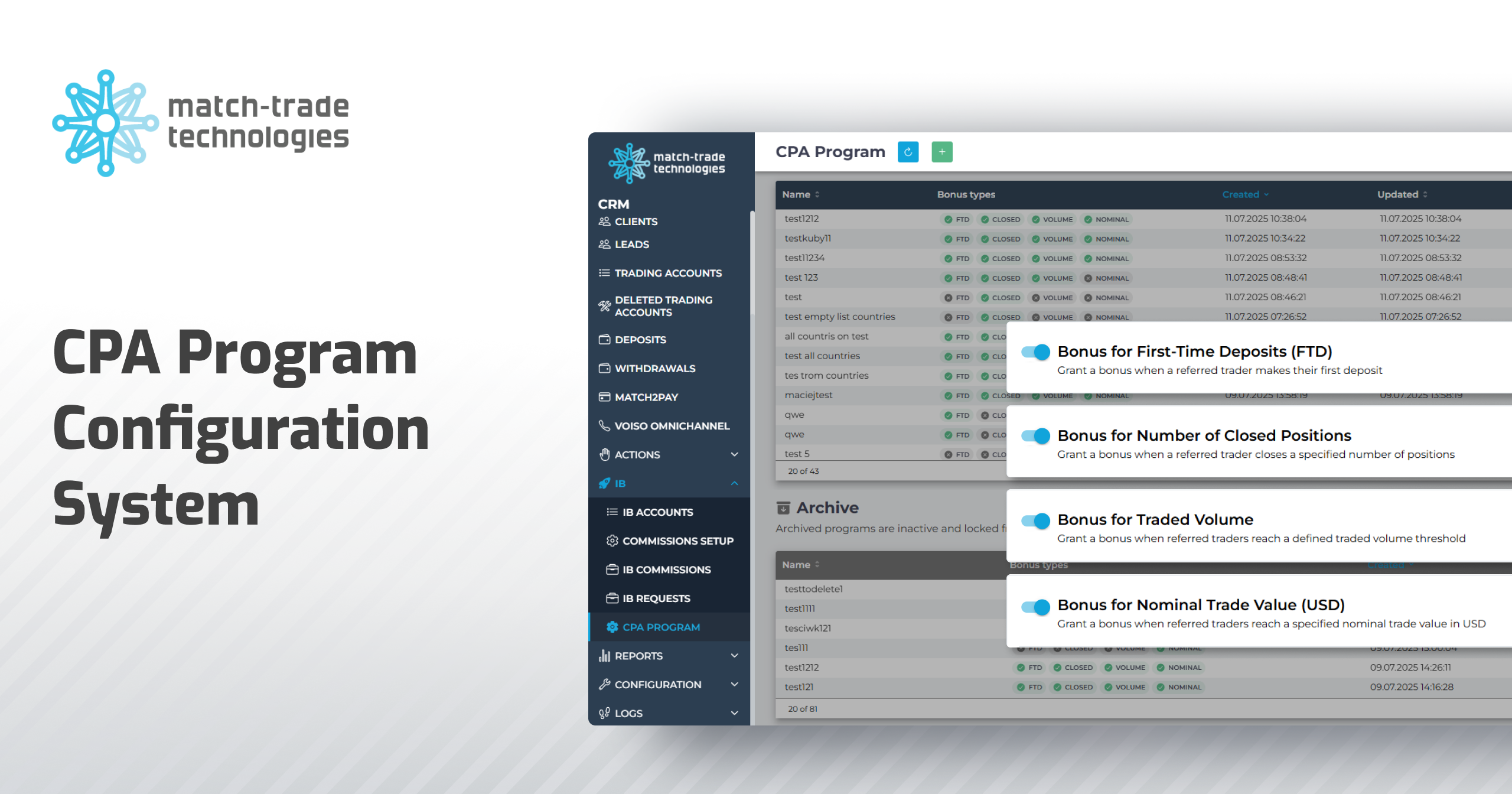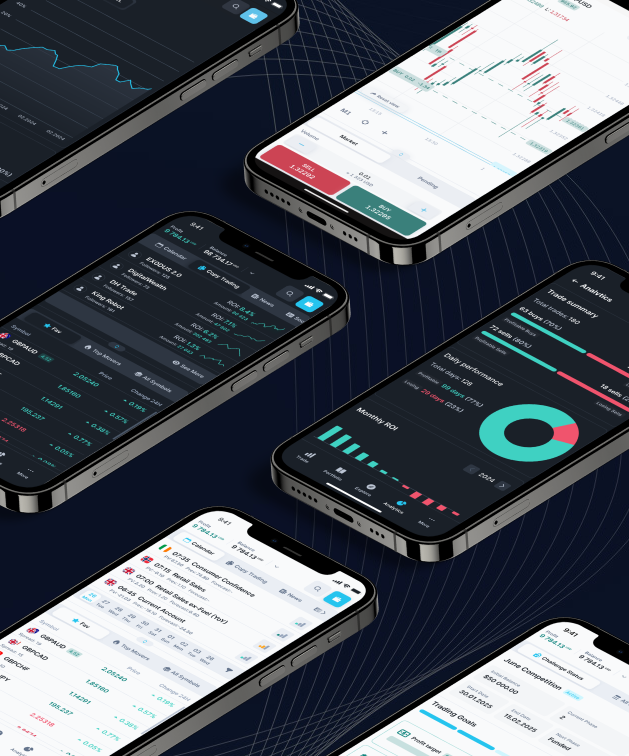LeapRate Exclusive… Michael Karczewski, Chief Operating Officer and Christopher Dankowski, Chief Business Development Officer at Match-Trade Technologies, join Leaprate today to talk about how Forex market has changed during last year and what are the upcoming trends.

Match-Trade Technologies
1. There was a lot of turmoil on the Forex market last year, what do you think has affected business the most and how brokers adapted?
Michael Karczewski: Well, 2019 was the first full year with ESMA regulations being in force, and it had a huge impact on a significant fall of turnovers generated by traders in Europe. Therefore, we have experienced an outflow of clients to jurisdictions outside the EU. Still, that doesn’t solve the problem. The only way to maintain a stable growth or – in some cases even – to survive is to adapt to the changing environment and different brokers found few solutions.
The most obvious way for EU regulated brokers, who mostly do B-Book, was to focus on effective risk management. So far dealing departments internalized most of the flow, but nowadays where the leverage is lower and periods of low volatility on the market are getting longer, brokers look for advanced tools to better qualify which trades should be hedged.
Secondly, brokers that were present mostly in EU countries decided to expand in other regions. We see many European brokers targeting clients from Asia, Africa or even South America, In those regions regulations aren’t that strict and brokers can offer higher leverage, more flexibility in cooperation with IBs and of course they can benefit from lower compliance costs.
And last, but not least, brokers started to offer EU clients alternative jurisdiction already at the onboarding process. Meaning that a trader, who wants to open an account with an EU regulated broker, is also offered an account with much better conditions if he decides to register at the entity outside of the EU. This way both sides benefits.
2. Now have we entered a new year, new challenges are to be faced. What have you been focusing on lately in terms of product development?
Christopher Dankowski: Our portfolio is already packed with a wide range of products and services as we want to be a one-stop-shop providing comprehensive solutions for all of our clients. For that reason, we are constantly improving our products one by one as well as our offer. We managed to upgrade our MT4/MT5 Bridge by adding a new web interface and multiple risk management features. Our proprietary Client Office with CRM has been integrated with xStation and cTrader platforms. We’ve also added Praxis Cashier to extend payment options and several KYC providers. Also, our Match2Pay crypto payment processor has gained new features and some new cryptocurrencies. We also managed to build a PAMM/MAM application for MT5 server, and this one will be also integrated with the new trading platform we have developed.
And it’s the new platform that we’ve been focusing on for the last few months. Match-Trader is a complete trading system that works with its own back-office based on our proprietary matching engine. This all-in-one trading solution comes with web, mobile and desktop app and all user’s settings are synchronised in real-time. Also, it’s integrated with Client Office (CRM), PAMM/MAM and it’s all accessible under SSO (single-sign-on). It was designed to ensure simplicity and the best possible trading experience cause we believe that people can switch to new technologies only when they can start using it instantly.
We want to provide solutions that will make it easier for clients to operate in the forex world instead of constantly offering outdated platforms requiring to purchase additional applications just to be able to manage trading accounts. We observed gambling and crypto industry, where it is an absolute standard to have one email login and one interface to manage your trading activities and account. And we want to transfer these high standards to the forex industry.
3. Is it still profitable, in the current market situation, to start own forex brokerage? What should novice brokers pay special attention to when choosing service providers?
KD: We believe that there is still some space in the industry for startup brokers, but we are also aware that it is getting harder to compete with well-established brands with huge marketing and sales budgets. Therefore brokers who stand the most chance to succeed are the ones who focus on targeting local markets because there are still the gaps in some particular countries or regions to be filled. Also, their biggest advantage would be local support and a good understanding of clients’ specific needs because it’s very often what global brokers lack. There is an alternative for classical forex brokerage. It’s to open a fully independent crypto broker. It may seem easier because there are no legal barriers, however, promotion of such broker can also be expensive since there is already quite high competition on the market.
What we advise to novice brokers is to look for cost optimization as it is crucial for a new business to survive. That’s why here at Match-Trade we charge very competitive fixed fees without additional turnover cost from the very beginning, to help our clients grow their businesses. Our business strategy is to obtain more clients who pay less rather than fewer clients paying high fees but with short business-life expectancy. We focus on helping the brokers to survive and develop and I can tell you this approach is worthwhile as the number of our White Label clients is constantly rising. Many of them have transferred their WL from different providers and that gives us confidence that we are going in a good direction.
4. As you mentioned the crypto industry, what is your opinion on the current market situation? Are you still active in this area despite significant slowdown?
MK: It is common knowledge that the interest in cryptocurrencies and the amount of crypto solutions is strictly linked with their current value. We saw the prices jumped up to $13k in the middle of the year, which raised many questions if companies like ours should focus again on crypto solutions. Also, at the end of 2017 everyone was hyped to start a Cryptocurrency Exchange and nowadays we see many of those exchanges not being able to make ends meet on such competitive market with commission-based business model domination. That’s why we decided to focus on crypto payments processing and market making as we still see good growth potential in this field. After recurring industry regulations tightening, many brokers struggle with accepting deposits from their clients, so adding bitcoin as a payment option is an ideal solution for them. Regarding market making, we have established a team of experts, who have created advanced algorithms that trade on multiple exchanges. This is the fastest-growing part of our business and I think we will be still investing in this area and developing by adding new exchanges plus entering futures or maybe options markets as well.

5. Has anything changed concerning Liquidity Providers? What are the main demands of those clients?
KD: We have noticed the liquidity market started changing after ESMA regulations were introduced in 2018. They have significantly hampered the growth of small and midsize brokers licensed in Europe. As a result, competition from legacy Liquidity Providers has increased also in offshore areas, because those companies have faced limited growth in the regulated part of the industry. We provide liquidity solutions to our clients and we always try to keep pace with the market developments. What our clients expect the most from their LPs is flexibility in terms of leverage, range of markets, spreads and payment options. This is why smaller companies like ours can still compete and gain market share. Our biggest advantage is that we use almost solely our proprietary technology which includes our Match-Trader Pro platform, MT4/MT5 Bridge, FIX Connectivity, Data Feeds and Execution based on our Matching Engine. Thanks to it we can provide cost-effective solutions tailored to the various needs of our clients, instead of being just another White Label of popular aggregation system, which is a typical setup in the liquidity market. From our experience, we see that the most important factor to build a good relationship in the institutional market is transparency and understanding of the client’s needs. Sometimes even having certain types of regulations play a smaller role than trust and good reputation gained in the field.
6. Are there any promising partnerships up your sleeve?
MK: Yes, I think so. We signed a partnership agreement with Brokeree Solutions to offer their Social Trading and PAMM solutions to our White Label clients both on MT4/MT5 and Match-Trader platforms. As Chris mentioned, lately we have released our Match-Trader System and we are now in the process of negotiating a few partnerships with companies who want to join the ecosystem of our platform.
In terms of business partnerships, we teamed up with LSSR group, who became our official representative in IPBS region (India, Pakistan, Bangladesh and Sri Lanka). Thanks to their business background we were able to extend our services for brokers to company formation, opening bank accounts or website creation. We are always open to establishing new partnerships, in different regions of the world, with companies who provide services complementary to ours or just want to become our representatives and offer Match-Trade’s products and services.
7. And what are your plans for the future? How do you plan to surprise your customers this year?
KD: Our plans for 2020 are quite ambitious because we are aware that we must constantly develop our business to keep up with the industry. We will focus on further development and promotion of our new Match-Trader platform which ultimately will be an all-in-one trading solution for brokers. We want to build a one-stop-shop for brokers, assuring high-quality services in various areas. We will be investing in our liquidity solutions, especially technology and security of funds.
MK: And regarding the cryptocurrency side of our business, as I mentioned before, we plan to further develop our cryptocurrency market making solution to be able to compete on the biggest and most liquid Exchanges. We also plan to publish a tool, that will show our projection of real volume on each exchange as we think that currently available algorithms don’t estimate it accurately.





